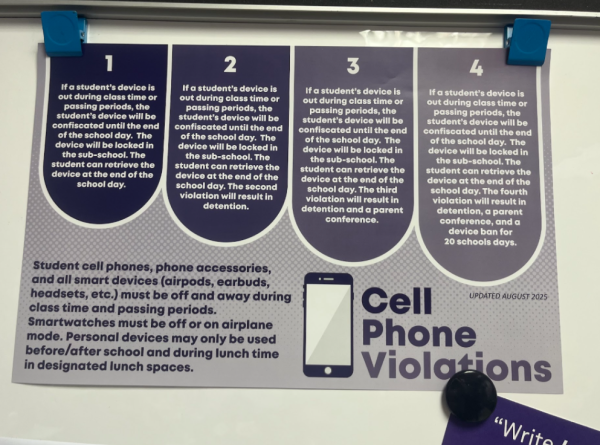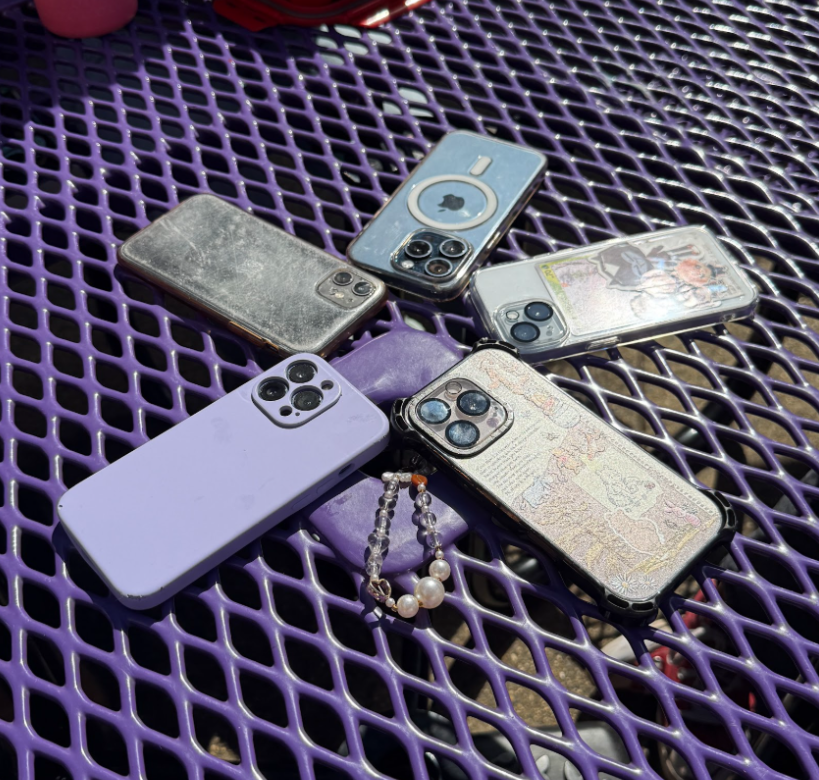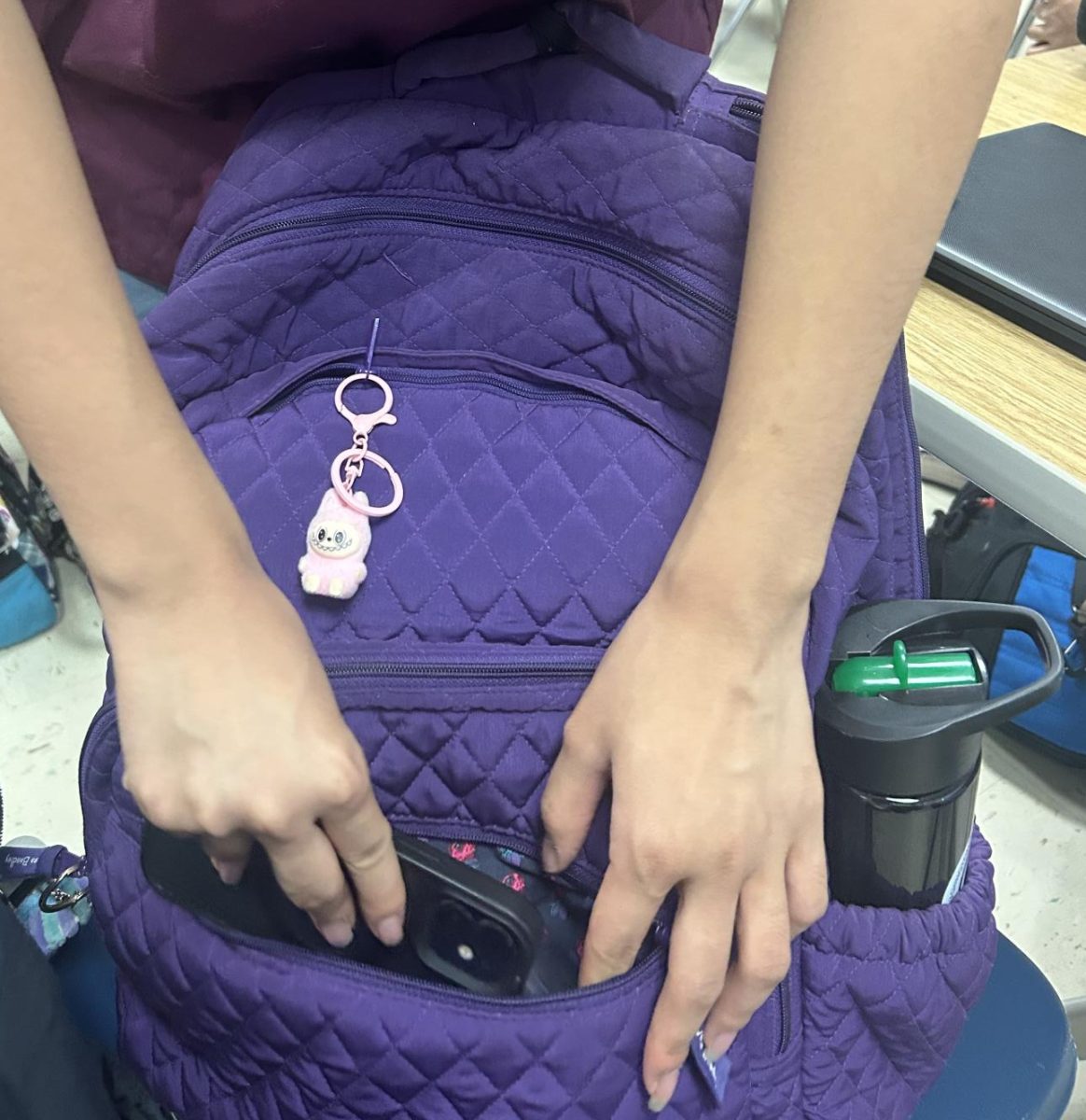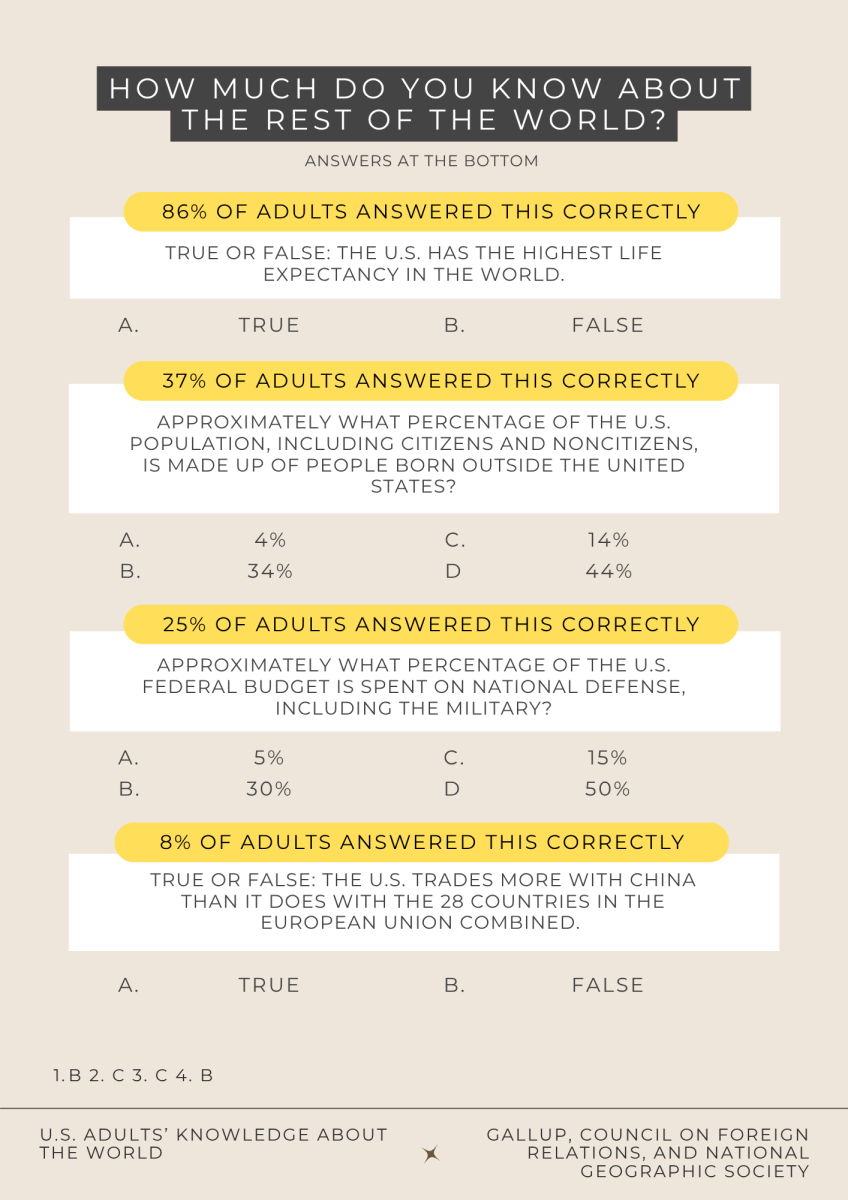The phrase “off and away for the day” has been emphasized in the morning announcements, hallways and every classroom in the school. The cellphone ban has impacted the learning environment in several ways, not all of them for the better.
It is irrefutable that excessive cellphone usage is a problem among teens. In a survey conducted by Common Sense Media, only 14% of students reported that they have no difficulty regulating the time they spend online or on their cellphones. Still, it should be questioned if this policy is the best way to address this problem.
The time students spend online feels entertaining and engaging, not by coincidence, but by design. Algorithms are intentionally made to interfere with the brain’s reward system, which adolescents are more susceptible to, as concluded in a study by the National Institute of Medicine.
Digital literacy lessons should inform students that these algorithms create endless streams of content tailored to maximize their retention, not write off overuse as a lack of self-control. A ban being the sole cellphone policy places the availability of cellphones as the root issue, rather than a side effect of a larger problem. The reasons as to why students are on their phones should be the basis of the cellphone policy.
For example, according to a survey by Common Sense Media, 69% of students reported using their phones to get relief from negative feelings. The same survey found that the highest portion of students’ screen time at school was spent on social media, at a median duration of 15 minutes. Short-form, highly tailored content makes it easy for students to disconnect from negative emotions. The data indicates that students need a break, rather than that cellphones specifically are distracting them from learning.

By placing a strict ban on devices that seemingly offer a relief from being overworked, policymakers have removed access to these individual short breaks without offering an adequate replacement. It is unlikely students will use their phones less if a number of them see their only immediate options in times of stress or boredom at school are doing work, sitting in silence or sneaking on their phones. Allowing students to take a set number of short, self-administered breaks while providing them with better ways to spend them could prevent this reliance.
Furthermore, the emphasis on outright bans rather than preventative measures requires school staff to enforce these rules. In a study from Pew Research, 60% of teachers in a school or district with a cellphone policy regarded it as difficult to enforce. This policy creates an additional burden for teachers and administration; school staff cannot be reasonably expected to keep 3,000 students from using their phones.
Having time where they cannot access their cellphones could be beneficial for a number of students; still, policies of this scale on an issue like cellphone overuse should be given more nuance. Updated media literacy education and the encouragement of healthier alternatives to cellphone usage would address the cause better. Effective measures don’t need to come in the form of outright bans; they can center supporting students.









